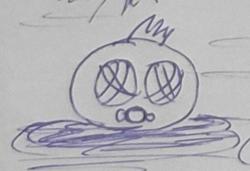1) 2D or 3D: this is now highly subjective, and you need to look at it from different perspectives.
Art cost:
from my dabbling in art I can tell you, depending on the game you are building, art can get more "expensive" for a 2D game than a 3D game quickly.
This comes down to the way high quality animations are done in 2D Games, which will need you to redraw the moving sprites for every frame. Granted, an expierienced artist might not have to redraw the comple sprite, might split sprites into parts to save time and image size, and so on.
Fact is: a well built and rigged 3D Object can be animated any way you see fit.
Now for the flip side: creating a good 3D Object takes time, even for a simpler one (you have to work from all 6 directions instead of just one for 2D. You can use mirroring and other tricks, still, more to model and texture). Rigging (setting up the model for animation) then will also use up a good chunk of time.... and animation will again eat up a lot of time.
So, just as art cost in general, the question wheter 2D or 3D art is more expensive comes down to complexity. It is much easier creating 2D art for a graphically simple game. 3D art has some overhead cost because of the third dimension and the way animations are done.
Even if you go fully cheap with no animations, you still need to create your art in 3 Dimensions instead of 2 (Arguably, if you do a "Thomas was alone" clone in 3D, art budget would not go up much... just level and game design would be much harder to do  )
)
Engine / Low level Programming:
Now I lack extensive expierience in these fields, but you can be certain that programming a fully blown 3D Engine is MUCH harder than coming up with a simple 2D one. The third dimension makes a lot of the calculations needed much more difficult, you will have to use heavier frameworks to get any graphics going, and so on. This is IMO why a lot of people claim 2D Games to be easier to do than 3D games.
Using Engine:
If you use an existing engine, the question about 3D or 2D becomes mainly a game design / art cost one. Do you really NEED 3D? Will your game NOT work in 2D?
You still need to come with a plan to reduce your art cost to a minimum that will still work with your game design (do you really NEED animations? Do you really need organic creatures? Can you go with an abstract art style (see "Thomas was alone")?).
And you will still face some added complexity for 3D games (having to calculate a projectile trajectory in 3D IS harder to do than in 2D Space).
But more or less, you better go with what you know (if you are expierienced in creating 3D models but suck at drawing, choice is easy), or what you can afford (getting small unanimated pixel art 2D assets will be much cheaper than even simple 3D models), or what will be more useful to your game idea (you need an isometric view with fully animated characters? Think long and hard why you want to go 2D... ).
Commercial 3D Engines generally cost more, 3D models generally are a little more time intensive to produce, and level / game design in 3D space is a little harder to pull off. But as soon as you cut out the low level plumbing, it is not leagues apart anymore. And then as complexity of graphics rises, 2D Graphics budget explode. Ther is a reason why you rarely see isometric 2D spites being used anymore (at least AFAIK)... usually it is used in throwback games that want to tap into fond memories of the big 90's classics.
2) Language choice:
AFAIK, you will see people promoting them all. Don't expect Java or Python to be as much hyped as C++ is in the Game dev world. Also don't expect it to perform the same as a well written C++ program.
But as long as you are not looking for max performance, you are free to use any language you like to write your game, as long as it compiles for your target platform.
Now, you will find there are a lot of people using Java for game dev, it is the standard choice in the Android world AFAIK, and there are even some big Indie engines built around Java (JMonkey Engine for example)
IF you decide to go with an Engine though, I would advise you to not base your choice of Engine on the language it supports, but your choice of Language ond the language your engine of choice supports.
The really big, good Engines that are affordable for Indies out there support C++ (Unreal) or C# (Unity), a lot of the smaller Indie Engines are building upon C++, so your choice in Engines will get quite limited if you are not ready to learn a new language.
Also, coming from Java, you should be up to speed with C++ or C# in an existing Engine in no time (especially as the engine API is proprietary anyway, and a lot of the language specific oddities might be hidden by the engine framework (like memory management in C++ for example)).
3) To write an Engine or to write a game:
IF writing an engine is what you want to do, concentrate on that. The whole topic is fascinating, and if you are only really interested in programming as opposed to also doing art, level- and gamedesign, creating your own engine is a worthy project.
Don't expect to be able to write anything sellable quickly. The market for engines is oversaturated, the big boys are racing the prices to the bottom (good for Indie game devs, bad for Indie Engine devs), a lot of the small Indie Engine developers are struggling to make a dime from their engine they developed over ten years sometimes. You might be able to come up with a good niche engine. Still, with engines being pretty much jack-of-all-trades nowadays, differentiating yourself becomes a problem.
IF creating a game is your target, the scale of your game should dictate if you start from scratch or use an existing engine.
Want to create a simple 2D game (like tetris)... almost any engine will be overkill, and add an overhead to your performance cost.
Want to create a mid complex 2D game or simple 3D game: Only start from scratch if you are REALLY interested how it will work low level, or you are really expierienced and want to squeeze out that last bit of performance that an existing engine might eat away.
Anything more complex: Don't even try to re-invent the wheel. A lot of very expierienced devs poured many years of dev time into the existing engines. Choose the one that fits your needs best, tailor it if you need to (and have access to the needed source / plugin system), and start working on your game ASAP instead of wasting time trying to come up with a very complex engine that might take you years just to understand all the moving parts you have to come up with.
About Engines:
The big 3D ones in the Indie space currently are Unity and Unreal 4. Both have large communities, are affordable (different free / paid options, both have options that are free / almost free), are up to date and powerful, have released commercially successfull game made with them, lots of tutorials and community driven extensions available (some of them paid).
For 2D I hear a lot of good things about Game Maker.
But have a look yourself at the engine DB on devmaster.net ... you might find another engine you want to give a try
4) Steps to take:
Highly subjective. Professional Game devs usually start with a Game Design Document (GDD), which is kind of the high level project plan. There will be a pre production phase to test out new technology, art style, come up with and test core game design elements, and generally see if the planned project is viable. What follows is the production phase, were the game is programmed, art is created, sound is done (usually outsourced), level design happens and so on. At the end you have an Alpha release. And this is were the real fun starts (Alpha / Beta testing, Bugfixing, Marketing....)
For you as a small Indie, depending on your plans, most of these things do not matter that much.
Generally, you first need a good idea. Then comes a plan to execute this idea. This will include the decisions you already mentioned (2D / 3D, Engine or starting from scratch, Language choice (based on engine chosen)), but also others that are also important (how to source art (stock art vs. outsourcing vs. doing it yourself), art style (will be biggest influence on your art costs (time or money), detailed game design (you CAN come up with game design as you program... but try to at least have a very solid base, else you are walking blind), a good idea about the scope (the second big influence, not only on your art cost, but your overall project cost), and if you want to go commercial with it, a market analysis (do you even have a market?)).
Then you should start to prototype, prototype, prototype. They don't have to be fancy, you can use placeholder art and crappy code (altough you SHOULD try to come up with example art, or commision that by a good artist, so you have a good idea what you will need down the line).
What you are trying to achieve with all this prototyping is the same as a big studio does with their pre-production: Test if your idea is fun, try to make it fun if it isn't yet, if this is successful, refine the idea so that the production phase is as cheap and productive as possible (as in: you don't need to recomission finished art because you just found X or Z does not work anymore with your new idea).
Then you start crunching out the code and the art that will transform your rough gameplay prototype into a finished game.
Oh, and before I forget: Disclaimer Time!
Game development is a long and hard process. If you want to develop anything more complex, you will need a lot of skill and time, or the money to buy that skill and time from others!
Scope your project according to what amount of time and money you want to invest, and the skills you already posess!
You CAN bite off more than you can chew... this is a free world after all. Just be prepared for the hard reality that comes with it. If you get demotivated quickly, don't try that at home, and keep it to baby steps as others have sugessted. Your mental and physical health will thank you for it (even though your doctor would most probably welcome seeing you more because of stress related issues  ).
).
Game development done by the big studios is so expensive for a reason! They don't blow it all on booze and parties, they need that money for work!









